When you buy through our links, we may earn a commission. Products or services may be offered by an affiliated entity. Learn more.
Best Sheets of 2025
There are generally two camps when it comes to sheets: People who fixate on things like texture, breathability, and weave, and those who’ve owned the same set of sheets for the last 10 years but couldn’t name them if they tried.
For those of us who fall somewhere between the two extremes, what makes a sheet set “best” comes down to a few basic questions: Are they comfortable? Do they look nice? How much are they? Will they hold up?
To come up with our list of top picks, our testing team personally evaluated dozens of sheets sets based on factors like cooling, durability, and overall feel. We tested the sheets in our Seattle-based Test Lab and in our homes, and we also solicited real-world feedback from customers who love (and loathe) their sheets.
Read on for our top picks, then keep going to learn about exactly what it is that you’re buying. Is a 2,400 thread count sheet going to outsleep a 200 thread count sheet? Is Egyptian cotton grown in Egypt? Are those bamboo and eucalyptus sheets actually made from plants? Scroll past our product picks to find out.
Our Top Picks
- Best Overall – Saatva Organic Sateen Sheet Set
- Best Cooling – Luxome Luxury Sheet Set
- Best Luxury – Cozy Earth Bamboo Sheet Set
- Best Value – Quince Organic Percale Sheet Set
- Best Egyptian Cotton – Silk & Snow Egyptian Cotton Sheets
- Best All-Season – Brooklinen Classic Core Sheet Set
- Softest – Sweet Zzz Organic Bamboo Sheets
- Best Hotel-Style – Quince Giza Cotton Sheet Set
- Best Lightweight – Sijo AiryWeight Eucalyptus Sheet Set
How We Tested the Best Sheets
Testing Criteria for Sheets
In our quest to find the best sheets, we decided to focus on a few key factors during the testing process:
- High-quality materials: Our primary concern was finding sheets that are made with top-quality fabrics. There are a ton of different materials to pick from, with some of the most popular being different types of cotton, bamboo, and eucalyptus. We also considered weave, which is the pattern of interlacing threads, and can come in fabrics like sateen, percale, jersey, and more. We didn’t prioritize thread count as much (more on that below), but we still considered it to ensure each set of sheets would be a durable choice.
- Variety of colors and sizes: One of the more fun parts of shopping for sheets? Colors and patterns. We looked for sheet sets that are available in at least five different colors (neutral, bold, or otherwise), along with a variety of sizes. Some of our favorites are also versatile enough to fit over 15-inch mattresses or higher.
- Comfort: Most importantly, every sheet set we tested had to be comfortable. This can be subjective, so we included a variety of materials, weaves, and thread counts, looking for options that have different feels (crisp and lightweight versus soft and silky, for instance) to fit every kind of sleeper.
How We Evaluated
To started, we began by researching popular bedding brands. We also chatted with our testing team to see if they had any sheets that they already loved. After narrowing our search down to a few different brands, we made sure our testing options included a variety of materials and weaves for all different sleepers.
From there, it was all about the trial process. Each tester slept on their sheet set for a few nights, forming their opinion based on performance categories like material, variety, and comfort. Testers slept on their regular mattress for a baseline experience.
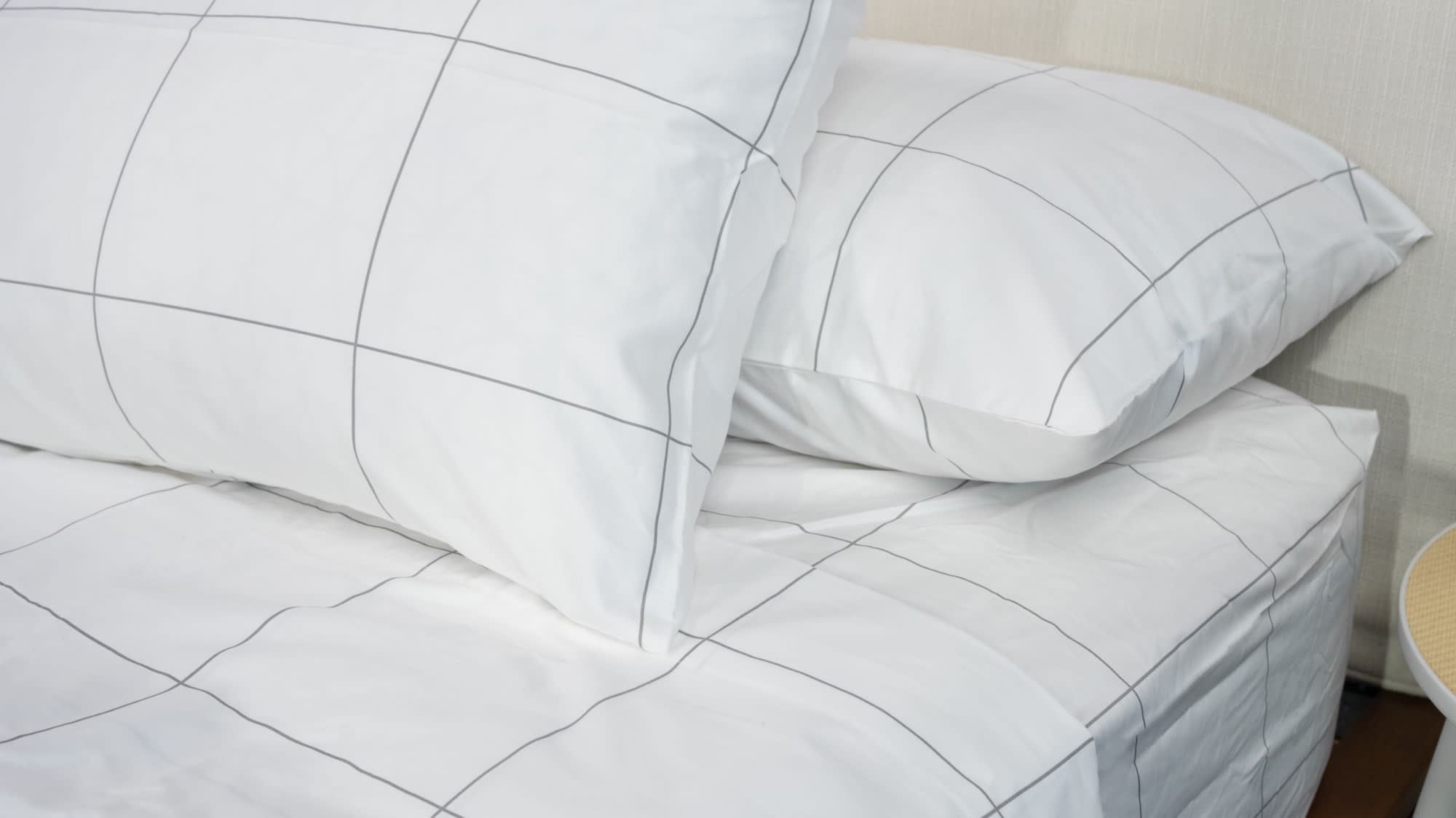
After testing, we ranked each sheet set to come up with a total score out of 10. We also gave scores for durability, temperature regulation, and comfort. Lastly, we assigned accolades to each one.
Our Testing Team

Logan Foley
Editorial Director
Full Bio

Mary Fenton
Head of Product Content
Full Bio

Jeremy Klein
Senior Product Testing Manager
Full Bio

Brad Nehring
Senior Product Analyst
Full Bio

Colin Simpson
Product Research Manager
Full Bio
Best Overall
8.8 /10 Test Lab Score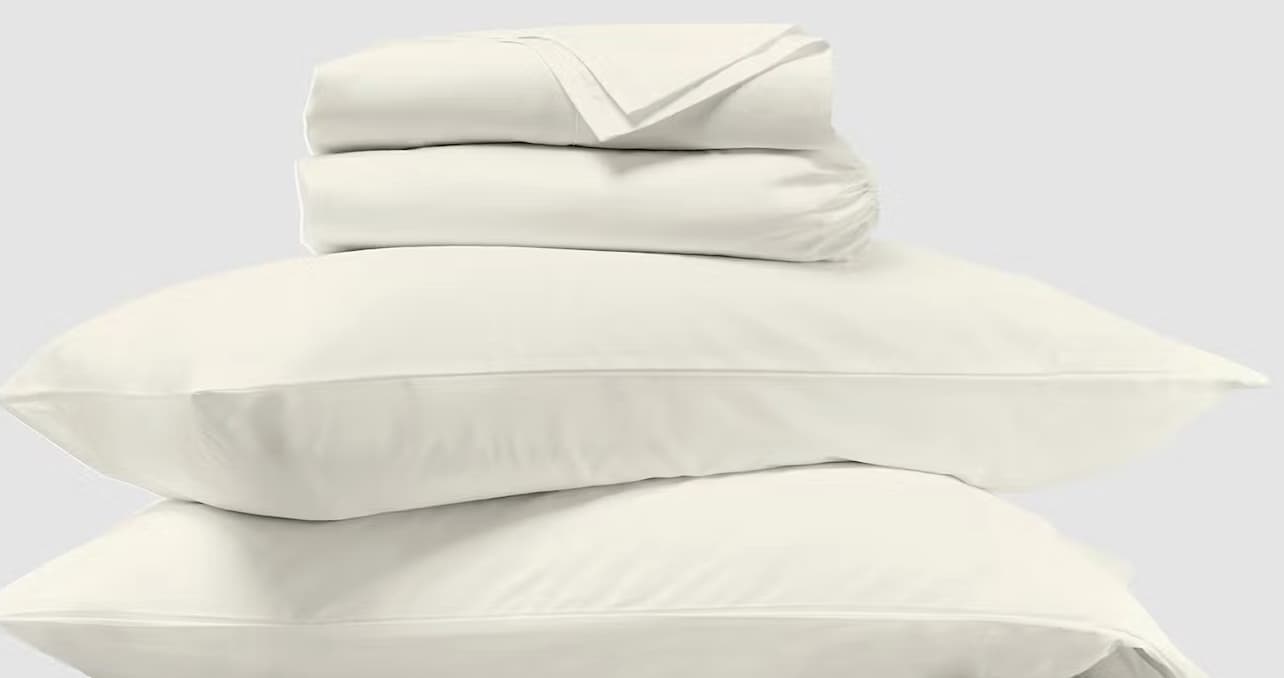
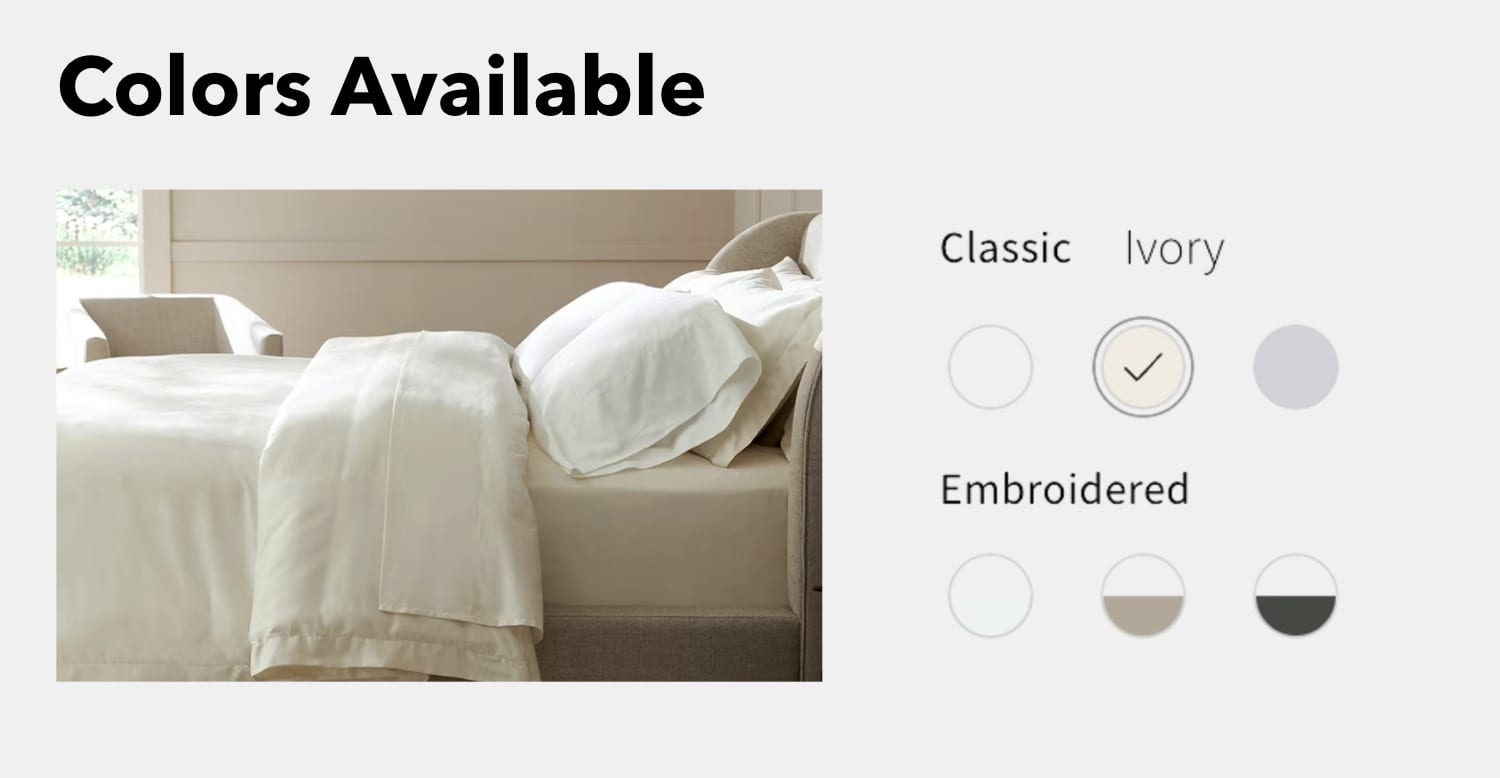
Saatva Organic Sateen Sheet Set
Key Details
- Sizes available: Twin, twin XL, full, queen, king, split king, California king, upper-flex queen, upper-flex king
- Feel: The 300 thread count of these organic cotton sheets boasts a smooth, silky, and universally-loved feel that prioritizes breathability and long-term use.
- Highlights: The soft material ranked high in testing thanks to the 100% cotton construction. Deep pockets ensure they’ll fit beds up to 16 inches high and temperature neutrality is good for hot sleepers.
- Drawbacks: There aren’t that many colors available and they may not be warm enough for cooler climates.
- Colors Available: 6 (White, Ivory, Grey; Embroidered White, Embroidered Taupe, and Embroidered Graphite)
Full Breakdown
The Saatva Organic Sateen Sheet Set is made of 100% cotton with a 300 thread count and smooth sateen weave. The set comes in three colors — white, ivory, and grey — and each set includes a flat sheet, fitted sheet, and a pair of pillowcases. The fitted sheet has a 16-inch pocket depth, so you can use this set on most beds, including thick pillow-tops.
If you’re a fan of eco-friendly products, the cotton in these sheets has Global Organic Textile Standard (GOTS) certification to show it meets strict standards for organic sourcing.
The sateen weave gives the Saatva Organic Sateen Sheet Set a luxuriously silky feel, and the cotton has breathable properties that should keep you cool even on warmer nights. One of the benefits of silky sheets, apart from the smooth feel, is that they’re less abrasive. This makes them a great fit for sleepers with skin that’s easily irritated.
In testing, we gave them high ranks for durability, temperature regulation, and fit, also noting that they were super comfortable and easy to clean.
Best Cooling
9.2 /10 Test Lab Score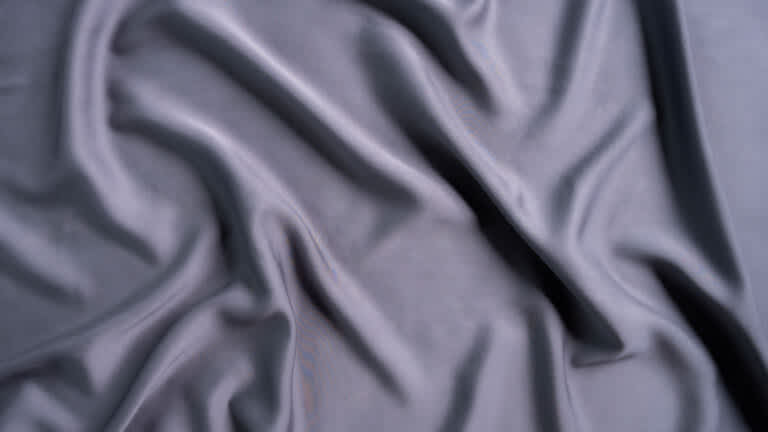
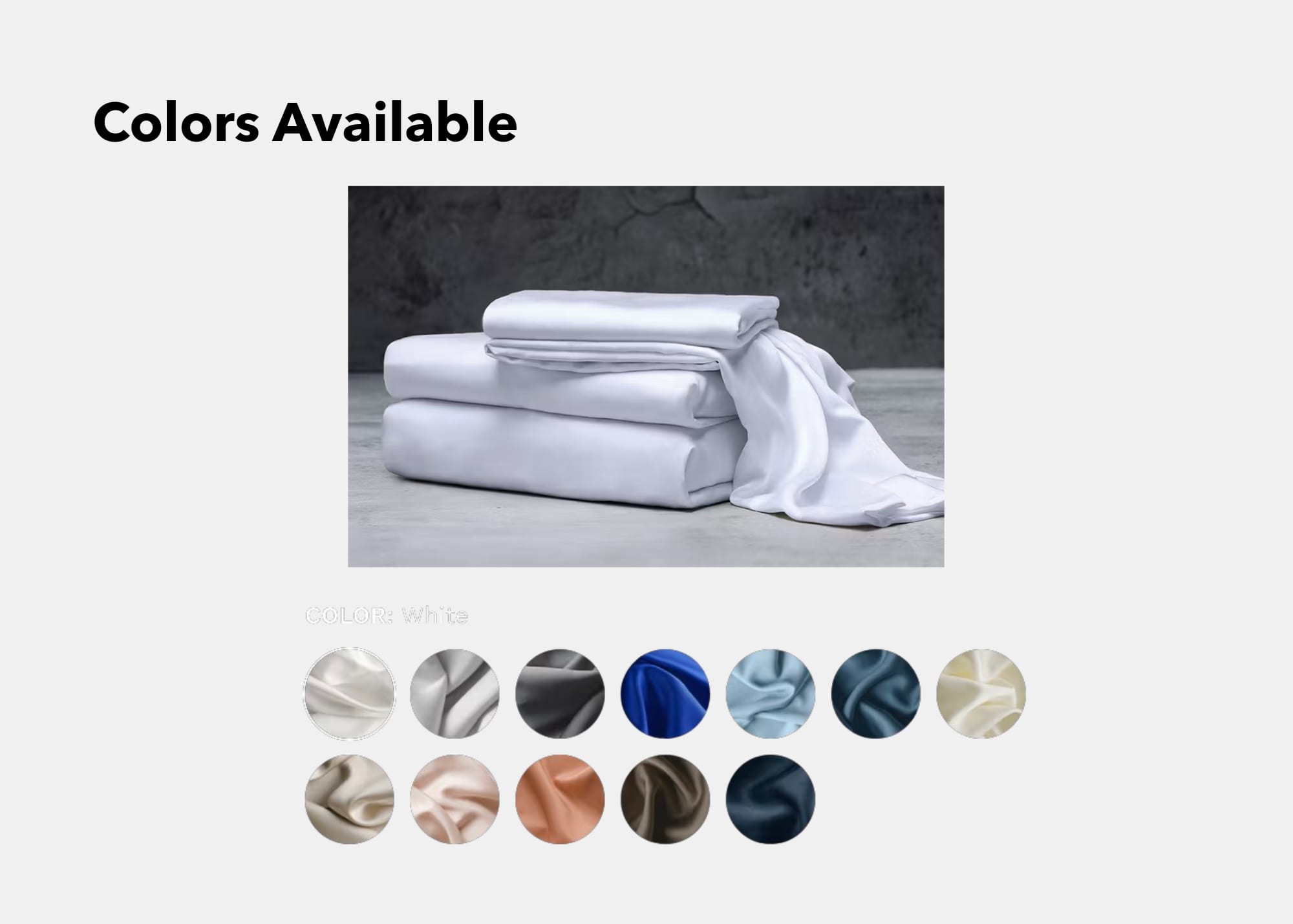
Luxome Luxury Sheet Set
Key Details
- Sizes Available: Twin, twin XL, full, queen, king, California king, split king
- Feel: Viscose from bamboo and a sateen weave provide a buttery soft fabric feel without sacrificing breathability. The 400 thread count means they’ll be exceptionally durable, too.
- Highlights: In testing, we found that these sheets delivered on their promise of feeling luxuriously soft. They’re available in 12 colors, and deep pockets ensure a snug fit to your mattress.
- Drawbacks: They may not be warm enough for cooler temperatures, and the 30-day sleep trial is a bit shorter than other options on our list.
- Colors Available: 12 (White, Stone, Charcoal, Sapphire, Surf, Ocean, Ivory, Dune, Blush, Terracotta, Truffle, Navy)
Full Breakdown
The sateen weave of these sheets is naturally smooth, offering a lustrous, silky surface. The 400-thread count means they’re impressively durable and will last the long-term, even through nightly use and regular washing. Additionally, when we tried them out, we found that the sateen weave gave them a silky sheen that our tester said made them “glide over the skin and never feel harsh or abrasive.”
“I’ve used the sheets for two years and love how soft they feel compared to cotton sheets, while also helping me sleep much cooler at night,” he also noted.
As an added bonus, the fitted sheet has a much larger than standard pocket depth, so it’s able to fit mattresses up to 17 inches thick.
Sheets made from bamboo-derived fabrics are known for their exceptional cooling, and the Luxome Luxury Sheets embody that quality. The sheets drape closely to your body without trapping too much heat, so the set is suitable for year-round use. Our testers gave these sheets high marks on each of our temperature control tests, and our hot-sleeping testers in particular gave their seals of approval.
The bamboo-derived fabric is exceptionally soft to start, and the sateen weave takes that softness to a deeper level. Right out of the packaging, our testers noted the silky-smooth feel of the Luxome Luxury Sheets and couldn’t get enough of their softness. Our testers with more sensitive skin specifically noted the smoothness of these sheets and that the fabric didn’t rub too harshly as they were lying in bed.
Best Luxury
8.8 /10 Test Lab Score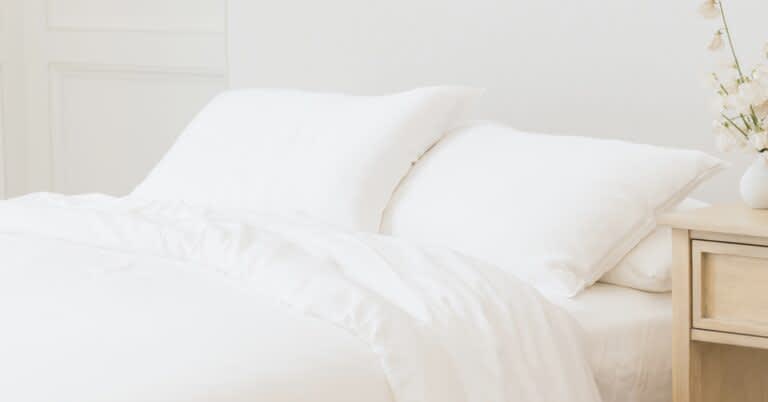
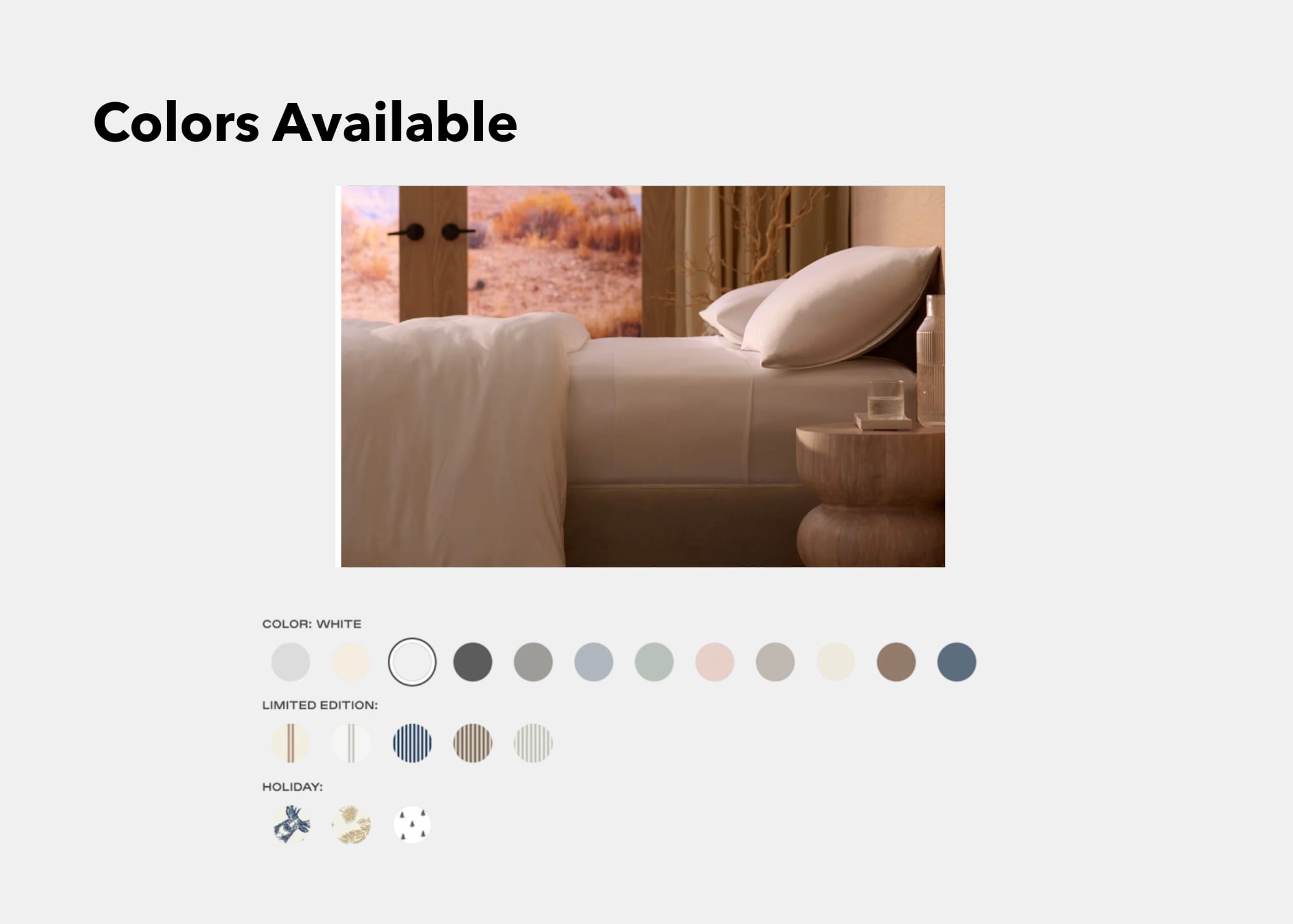
Cozy Earth Bamboo Sheet Set
Key Details
- Sizes Available: Twin/twin XL, full, queen, king, California king, split king
- Feel: Bamboo-derived viscose offers a smooth, soft experience that feels super comfortable to sleep in. Since viscose is also great for temperature regulation, it received high ratings from our testers who sleep warm, too.
- Highlights: Available in a variety of colors and patterns, Cozy Earth’s bamboo sheets feel buttery and luxurious against the skin thanks to its sateen weave. They’re also deep enough to fit mattresses up to 20 inches, and come with a 10-year warranty and 100-night sleep trial.
- Drawbacks: They boast a slightly oversized fit, which means they may be a bit too big on some mattresses.
- Colors Options: 17 (Light Grey, Creme, White, Charcoal, Dove Grey, Shore, Laurel, Peony, Driftwood, Oat, Walnut, Pacific Blue; limited edition colors: Baja Stripe in Maple or Laurel, Classic Stripe in Pacific, Ebony, or Laurel)
Full Breakdown
These sheets and pillowcases are constructed using viscose derived from bamboo in a sateen weave. As a result, each component feels very soft, smooth, and gentle on your skin. Viscose’s excellent cooling properties also make the set a solid choice for hot sleepers and people who reside in hot or humid climates.
Six sizes are available, including a split king with two fitted sheets for couples with adjustable beds. You can also choose from 17 different color palettes ranging from neutrals and earth tones to more vivid options like Pacific blue and sage. A pocket depth of 20 inches ensures universal compatibility no matter how thick your mattress is.
“They check all the key boxes for hot sleepers, people with sensitive skin, and those who appreciate silky-smooth bedding,” Logan Foley, Editorial Director, said upon testing. “Pocket depth is another strength — the fitted sheet can be used with any mattress measuring up to 20 inches, a range that encompasses every mainstream model sold today.”
The Bamboo Sheet Set was popular among our testing team for a number of reasons. We appreciated how silky-smooth each sheet and pillowcase felt against our skin, yet these items also earned favorable ratings during our temperature control tests — we’ve found softness and cooling don’t always go hand in hand. Other performance areas, like comfort, fit, and ease of care, received high ranks, too.
Read Our Full Cozy Earth Bamboo Sheet Set ReviewBest Value
9.3 /10 Test Lab Score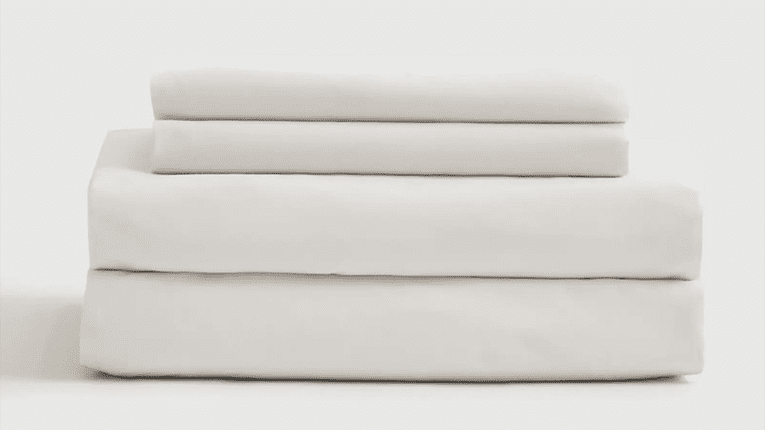
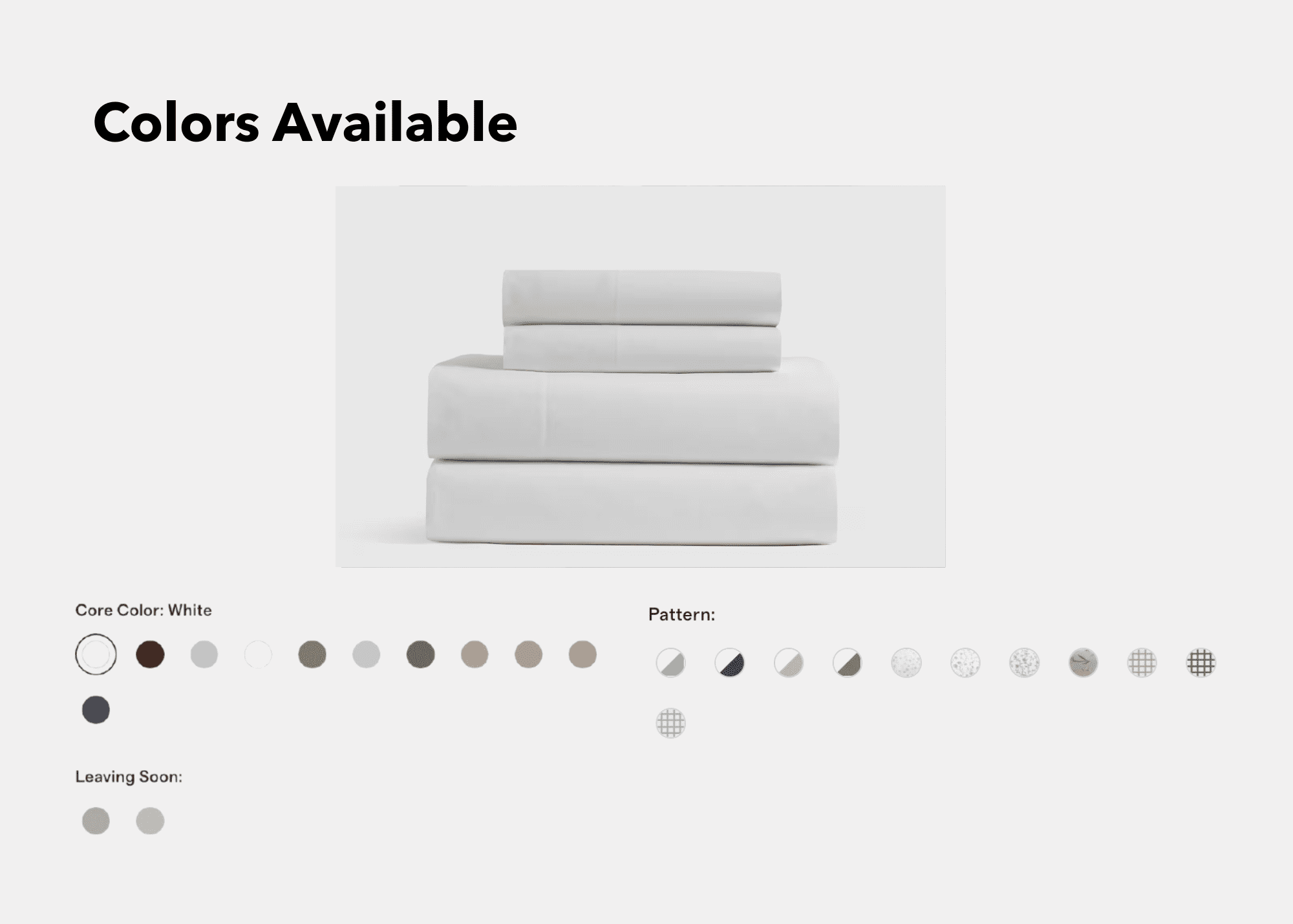
Quince Organic Percale Sheet Set
Key Details
- Sizes Available: Twin, twin XL, full, queen, king, California king, split king
- Feel: In testing, we found that these sheets are a bit softer than your average cotton set, but they’re still crisp and breathable for hot sleepers thanks to the percale weave.
- Highlights: Besides being well-priced, they’re available in 23 different colors and patterns and made from 100% organic cotton. The percale design also ensures that they’ll be a durable set of sheets, too.
- Drawbacks: You have to pay extra if you want a flat sheet, and the sheets themselves are only 16 inches deep.
- Color Options: 23 (White, Espresso, Mist, Ivory, Toffee, Light Grey, Dusty Olive, Fig, Dried Sage, Dove, Navy, Sage, Clay; Double Stripe in Mineral, Navy, Toffee, or Pine; Florette in Toffee, Blue, or Green; Blue Garden; Gingham in Cafe, Olive, or Blue Fog)
Full Breakdown
The Quince Organic Percale Sheet Set is well-priced, soft, and comfortable. The sheets are woven from 100% cotton and designed to get softer over time. In addition, the cotton is the long-staple variety, which is known for its durability. The high-quality material paired with the reasonable pricing makes these sheets an exceptional value. You can also choose from a wide array of colors, including patterns like stripes.
“The sheets are a bit softer than some of the other cotton percale sets out there, which is nice for sleepers who want something between silky and crisp,” our tester reported.
When we tried these out, we found that they were soft, breathable, and had a crisp quality that softened with each wash. The sheets earned high marks during our temperature control tests and met the needs of most of our hot sleepers. This is because cotton percale is typically lightweight and crisp, offering a breathable feel that’s ideal for warm sleepers.
Best Egyptian Cotton
9.0 /10 Test Lab Score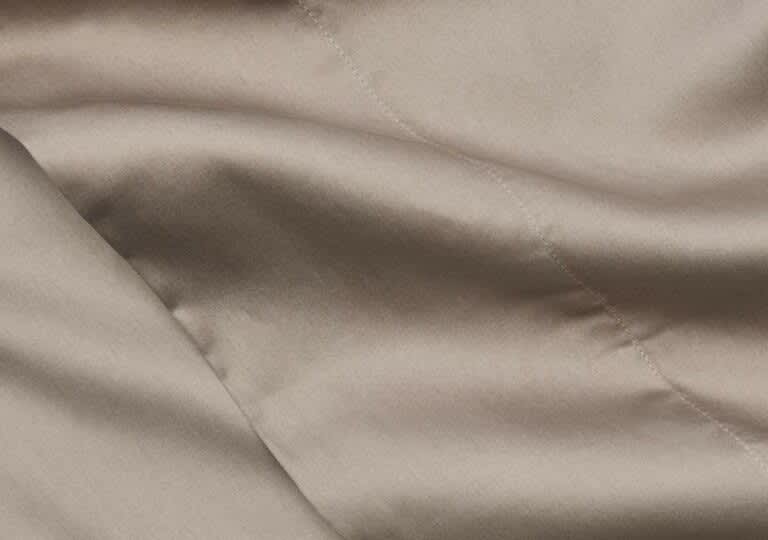
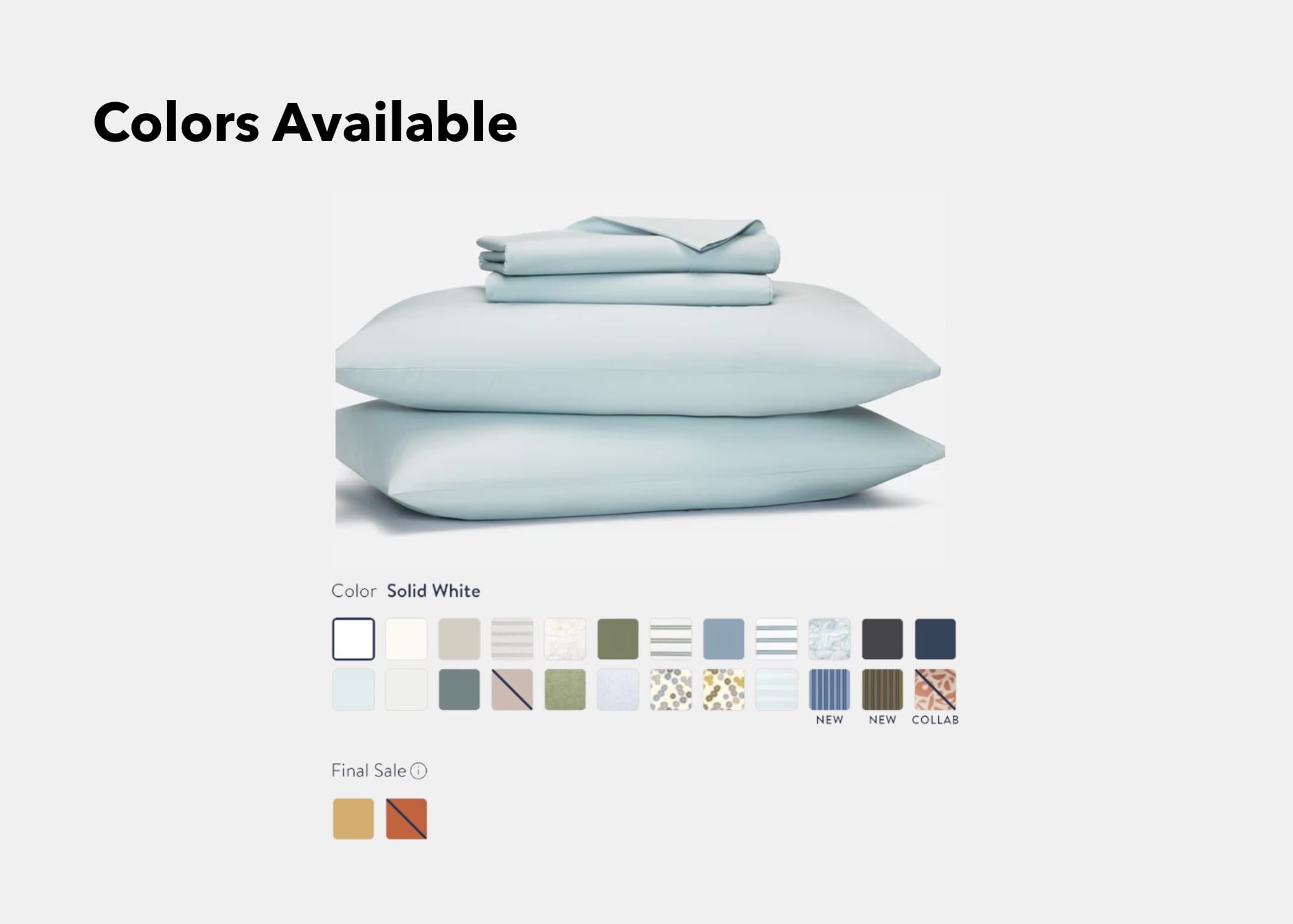
Silk & Snow Egyptian Cotton Sheets
Key Details
- Sizes Available: Twin, twin XL, full, queen, king, California king
- Feel: Egyptian cotton tends to be a super breathable, lightweight material, and these sheets definitely lived up to that. Contrasted by a soft feel and sateen sheen, the luxe feel ranked high in our books.
- Highlights: These sheets are surprisingly affordable, especially since Egyptian cotton is usually a more expensive fabric. Silk & Snow is also very transparent about their manufacturing process, offering a peek into each step of sourcing, dyeing, spinning, and sewing. They’ve been certified by OEKO-TEX and have a genuine Egyptian cotton license, too.
- Drawbacks: There aren’t as many colors or sizes to choose from as other options on our list. They’re also best fit for mattresses up to 15 inches in height, so beds that require deep pocket sheets aren’t a great option.
- Color Options: 9 (Eucalyptus, Espresso, Tempest Blue, Vista, Dusk Gray, Sand, White, Misty Rose, Driftwood)
Full Breakdown
Silk & Snow’s Egyptian Cotton Bed Sheets are soft, smooth, and exceptionally breathable. Each item is composed of extra-long staple cotton with a sateen weave for a silky finish. A hemmed border on the flat sheet and envelope-style closures for the pillowcases add to the set’s luxurious design. Matching duvet covers and pillow shams are available as well, and a certification from the Cotton Egypt Association ensures all of the set’s components are made from authentic Egyptian cotton.
“These sheets offer luxurious crispness and breathability without breaking the bank,” Brad said in testing. He recommended them for anyone who lives in a humid climate or sleepers who run warm. This is because of how well these performed in our temperature control tests, earning a near-perfect score.
Egyptian cotton is also a remarkable bedding material because it’s soft yet durable. Our team loved the silky-smooth feel of these sheets and pillowcases. The bedding is also fully machine-washable, so the set is easy to keep clean, and the sticker price is below average compared to other Egyptian cotton collections. A pocket depth of 15 inches means you can use the fitted sheet with most mattresses, but we recommend measuring your bed’s height before buying the set to ensure a proper fit — especially if you also sleep with a mattress topper.
Best All-Season
9.8 /10 Test Lab Score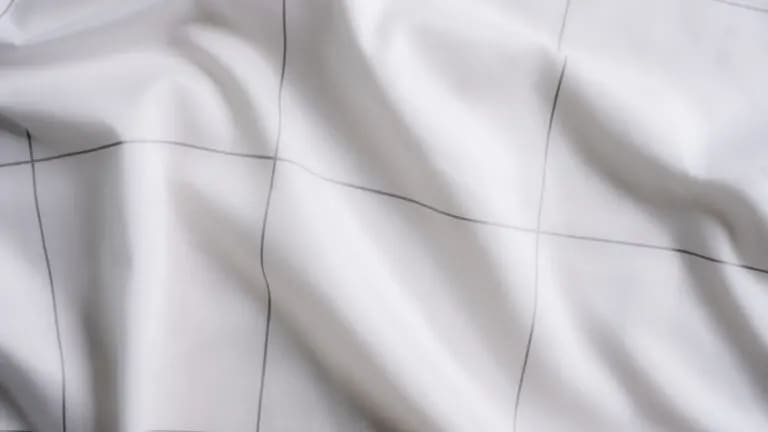

Brooklinen Classic Core Sheet Set
Key Details
- Sizes Available: Twin, twin XL, full, queen, king, California king
- Feel: At first, the long-staple cotton felt a bit stiff, but it ultimately softened with repeated use and washes. The percale weave offered a crisp, lightweight sensation that’s great for cooling.
- Highlights: There are a ton of color and pattern options to choose from, and you can purchase additional matching pillow shams, a duvet cover, and more. While the cotton percale design is a top-tier match for warm sleepers, we found that they’re great all-season sheets thanks to the durable, slightly upgraded construction.
- Drawbacks: They’re only available in 6 sizes, and not everyone may love the matte, percale feel, which differs from a smooth, almost silky sateen.
- Color Options: 24 (Solid White, Frost, Cream, Cloud, Pebble, Aegean, Oak, Fresh Moss, Storm, Slate, Abyss; patterns include Block Print Floral in Coral; Tandem Stripe in Umber, Pacific, Pebble, Sky, Fresh Moss, and Storm; Oyster in Storm; Floating Pebbles in Umber Multi and Aloe Multi; Oyster in Pebble)
Full Breakdown
The Classic Percale collection is composed of long-staple cotton with a crisp hand feel that at first may remind you of a freshly ironed dress shirt, but should soften with subsequent wash cycles. Each component has a mid-level thread count of 270, ensuring both durability and breathable construction that won’t retain too much heat. Brooklinen also has one of the more extensive return policies out there, giving you a year to return sheets.
Brooklinen’s Classic Core sheets provide a classic percale sheet experience that’s a few steps upgraded from your typical department store sheets. They’re OEKO-TEX STANDARD-certified, and the percale weave and cotton construction allow for plenty of airflow, helping even our hottest testers sleep comfortably. The sheets are slightly softer than a nice dress shirt when they’re fresh out of the box, and they keep a crisp feel that gets a bit softer over time and washes.
Additionally, Brooklinen’s sheets got major points from our team when it comes to design. Along with several regular color options, Brooklinen offers multiple limited time colors and patterns throughout the year. The short and long sides of the fitted sheets are clearly labeled, which is always a nice touch. That being said, we noticed that some of the heavier dyes have a tendency to run at first, so we recommend washing more colorful sets on their own a few times before use.
Softest
8.8 /10 Test Lab Score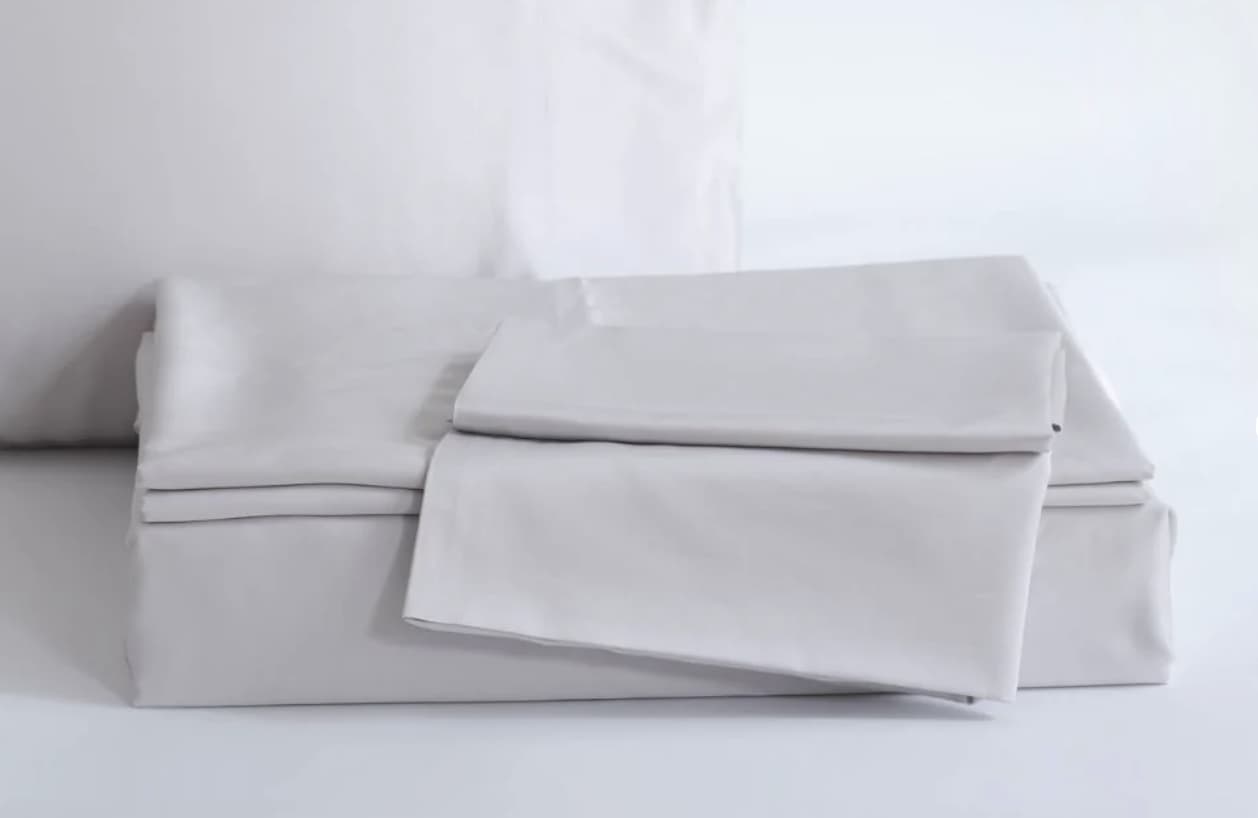
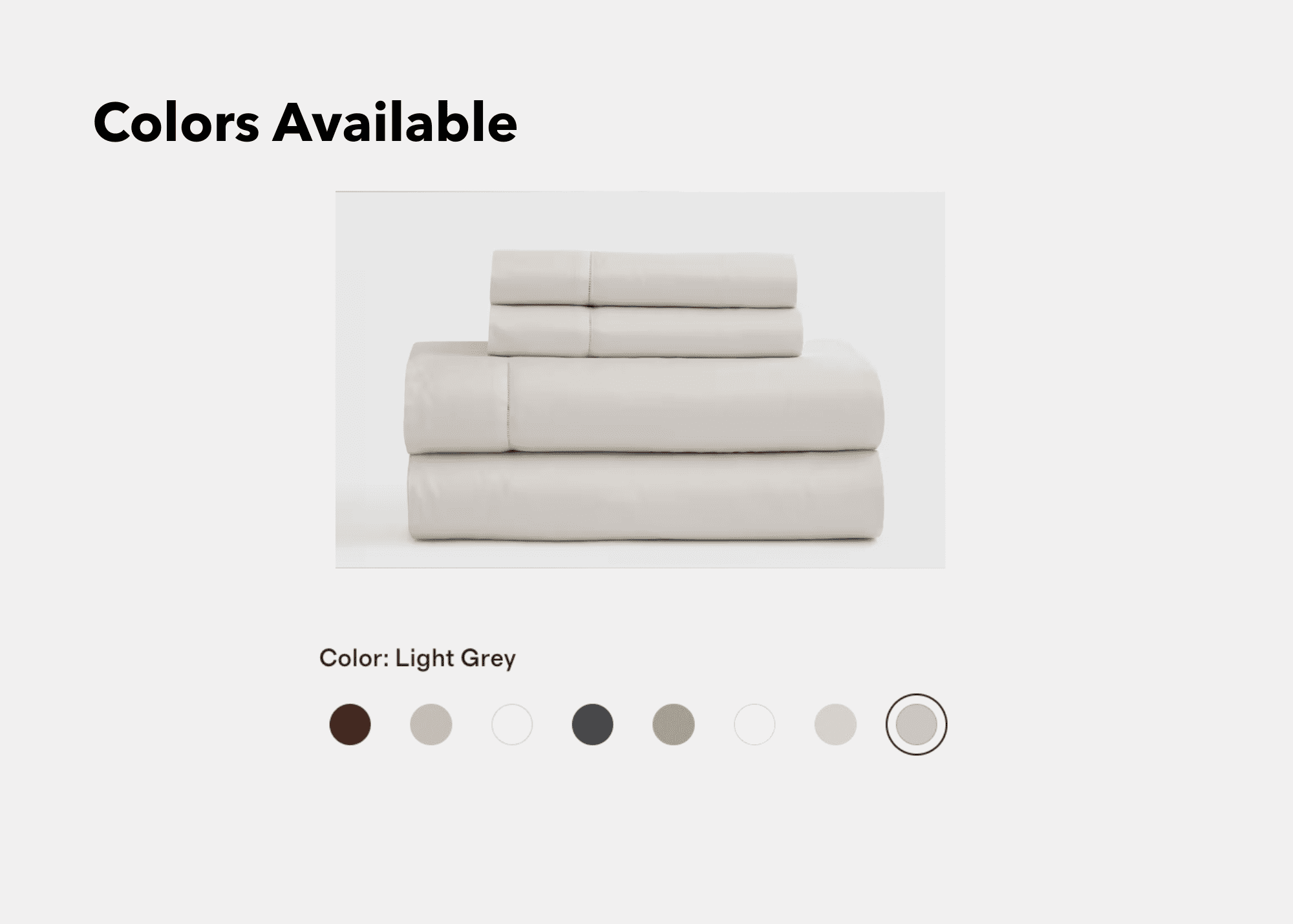
Sweet Zzz Organic Bamboo Sheets
Key Details
- Sizes Available: Twin, twin XL, full, queen, king, California king
- Feel: When we tested these out, we found that they were impressively smooth and lightweight thanks to the bamboo-sateen design. The sateen weave only makes them feel even softer, but they’re still breathable enough for warm seasons, hot sleepers, or year-round zzz’s.
- Highlights: The material and weave means that they’re super soft, offering a buttery feel our testers fell in love with. They come with a lifetime warranty, don’t pill after washing (or with frequent use), and have a 50-day return policy. They’re also hypoallergenic and made with sensitive skin in mind.
- Drawbacks: There aren’t too many colors to choose from and only fit mattresses up to 15 inches high.
- Color Options: 9 (White, Silver, Sand, Taupe, Light Blue, Charcoal, Dark Gray, Burgundy, Blush)
Full Breakdown
The sheets and pillowcases in this collection are composed of viscose, a naturally soft and smooth fabric derived from bamboo fibers. A sateen weave enhances the buttery feel of each item. The bamboo is organically grown and sustainably harvested.
You can choose from nine colors and six sizes. The fitted sheet’s elastic banding can be used on any mattress between 6 and 15 inches tall, a range that encompasses most models sold today — though high-profile beds may need more pocket depth. Each set component can be washed and dried in household machines for quick, easy care.
Our tester, Colin Simpson, Product Research Manager, gave top-notch ratings for these sheets, finding that they “offer the best of both worlds for those seeking softness, cooling, and lightweight construction for their bedding.” He also noted that they’re a great pick for eco-friendly shoppers thanks to the organically grown bamboo.
As such, sateen-woven viscose is a luxuriously soft fabric that drapes closely to the body — our testing team also likened the feel of this material to natural silk. The sheets and pillowcases feel cool to the touch, so the set can be a great asset on hot or humid nights. Easy care and durable construction round out the set, and the sticker price is very approachable given the bedding’s lasting power.
Best Hotel-Style
9.1 /10 Test Lab Score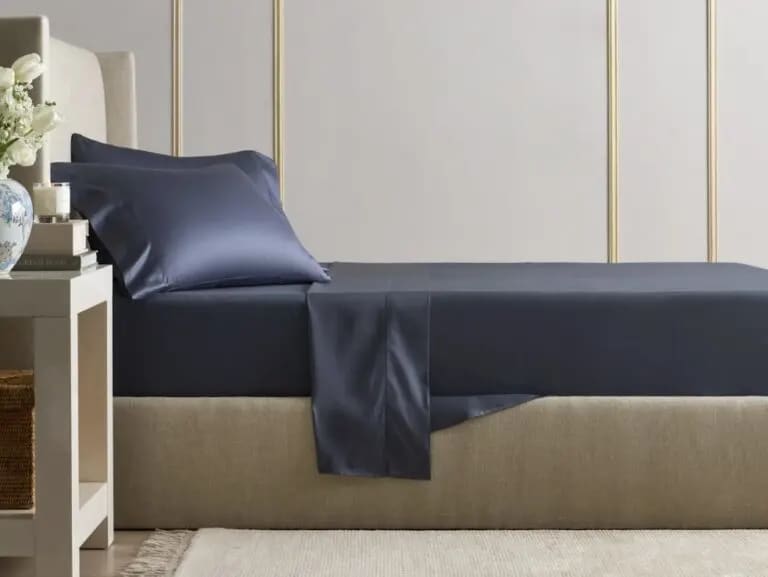

Quince Giza Cotton Sheet Set
Key Details
- Sizes Available: Twin, full, queen, king, California king
- Feel: These sheets are super soft. This is because of the cotton material and sateen weave, which work together to provide an incredibly smooth sleeping surface. The 100% cotton fabric is also very breathable, which hot sleepers will definitely appreciate.
- Highlights: With a 700 thread count and cotton-sateen design, we found that these Quince sheets work great for those who have sensitive skin. They fit mattresses up to 16 inches, have an OEKO-TEX certification, and won’t wrinkle too much, even with consistent use and washing.
- Drawbacks: You have to pay extra if you want a flat sheet included in your set and there are only five sizes to choose from.
- Color Options: 8 (Espresso, Stone, White, Mineral, Dried Sage, Ivory, Sand, Light Grey)
Full Breakdown
This set really showcases the appeal of sateen-woven cotton bedding. The sheets and pillowcases are touchably soft and smooth, making them ideal for people with sensitive skin or those who want to prevent wrinkles. Since cotton is naturally breathable, the sheets also sleep very cool – even during hotter times of the year.
“I love the Quince Giza Cotton Sheets for how soft and smooth they feel — the sateen weave gives the cotton this silk-like quality that’s easy on your skin,” Brad said. “They’re also really breathable, which I appreciate as a hot sleeper. Even in the dog days of summer, the sheets feel cool and inviting when I get into bed.”
Quince’s Giza Cotton Sheet Set includes a fitted sheet and one to two pillowcases depending on which size you select. A flat sheet can also be added for an extra fee. Each component is composed of pure Giza cotton with a sateen weave, resulting in a silky-smooth feel and close drape. You can choose from eight neutral colors to accent your bedroom decor.
Best Lightweight
7.8 /10 Test Lab Score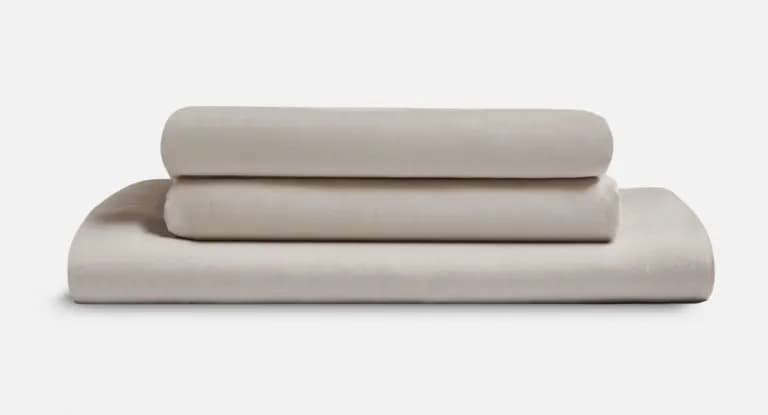

Sijo AiryWeight Eucalyptus Sheet Set
Key Details
- Sizes Available: Twin, twin XL, full, queen, king, California king
- Feel: Sijo got it right when they named these sheets “AiryWeight”. We found them to be impressively lightweight and breathable, but still silky soft thanks to the sateen weave.
- Highlights: This sheet set is affordable, naturally hypoallergenic, and cool to the touch. They’re allergen- and asthma-friendly, available in 13 colors, and of course, a huge win for hot sleepers or those who live in warm climates. Besides being breathable, they’re moisture-wicking, too.
- Drawbacks: You’ll have to pay extra if you want a flat sheet. They can also pill if they’re not properly washed and dried.
- Color Options: 13 (Snow, Clay, Fog, Blush, Dove, Stripe, Storm, Sky, Sapphire, Forest, Sage, Teal, Ivory)
Full Breakdown
The Sijo AiryWeight Eucalyptus Sheet Set is made from 100% Tencel lyocell fabric derived from eucalyptus. This material is known for being exceptionally breathable, cooling, and lightweight.
The materials used in the Sijo AiryWeight sheets are high-quality, a fact that shone through in all aspects of our testing. Our team found these sheets incredibly soft and light, and they were a crowd favorite during the testing process.
“They’re incredibly light and breathable, and they have a softness and sheen that’s undeniable,” Mary Fenton, Head of Product Content, said. “The 13 color options include some bold picks, so there really is something for everyone here.”
These sheets also aced all of our temperature control tests, staying nice and cool despite the environment. Every one of our hot-sleeping testers was very satisfied with these sheets and noted that they’d be great for year-round use. These sheets are thoughtfully constructed, making full use of the Tencel fabric and drawing out some of its best qualities.
Best Sheets of 2025 Video
So What’s in a Sheet?
There’s lots to unravel when it comes to deciphering sheet fact versus fiction, so we’re going to start at the source to help you discern the marketing babble from the sheet certitude.
Living in a Material World
Let’s talk fabrics.
Sheets are made from fabric. Fabrics can be made from a number of different plant, animal, and synthetic fibers. Those fibers are processed in a number of different ways to turn them into thread. Those threads are either knit (one continuously interloping thread) or woven (multiple threads crossing over/under one another). Knits tend to be stretchier and not wrinkle as much (think leggings, T-shirts, fleece) as weaves, which are more durable and prone to wrinkling (corduroy, flannel, denim).
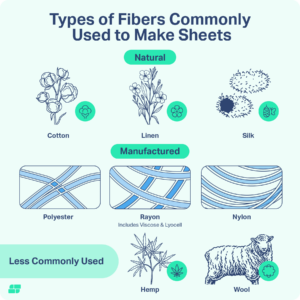
To further complicate matters, there are not only myriad species of the same plant (Egyptian or pima cotton, anyone?) but also multiple weaves and knits of said fibers. Cotton can have a percale, sateen, or twill weave, to name a few, but it can also be knit into jersey. And don’t get me started on staple lengths!
Ok, twist my arm.
Cotton and other natural fiber lengths are measured in staples. Generally speaking, the longer the staple, the softer and stronger the weave. Think about it like braiding hair. If you have a lot of layers, the hair will stick out everywhere versus if you have really really long hair it’s like a really strong rope. These sheets are generally pricier (looking at you again, Egyptian Cotton grown in Egypt) but they’ll typically have a longer shelf life given their higher quality.
While cotton and cotton blends are still the most popular choice in the U.S., representing about 80% of sheets on the market today, consumer choice often changes with the wind. Inflation, sustainability, and “performance” can all impact preferences and purchase decisions.
Outside of cotton, sheets are often made from linen (flax), silk, polyester (petroleum), and microfiber (polyester, nylon, acrylic), as well as lyocell, rayon, and viscose (tree pulp, including bamboo). Each has their pros and cons, benefits and drawbacks. And all of those all come down to what feels right to you: breathability, warmth, texture, lifespan, hue – linen will always be John’s gold standard, but Jane couldn’t imagine a world without flannel.
“From my experience, linen is the most breathable, but it’s also on the coarse side,” says Jeremy Klein, Senior Product Testing Manager. “On first touch, it’s not the most comfortable, but it gets softer the more you use it. For me, it’s a worthy sacrifice for its breathability. And I love its natural look. It doesn’t take dye well, so it only comes in more neutral tones.”
Your bedroom climate can affect your bedding choices as well. “I slept on flannel sheets growing up in Minnesota,” says Jackson Lindeke, Executive Product Director. “They are a classic seasonal sheet type that you throw on from October to April. It’s a thicker material. There’s a reason a flannel shirt is this cozy experience, right? It’s the same with flannel sheets.”
Looming Over You: Weaves
The majority of sheets are woven. Some, like jersey, are knit. Our resident certified textiles expert, Lauren Fountain, breaks down the main weaves you’ll find in sheets. A sateen weave is going to have a minimum ratio of four threads to one, but it can go up to 11:1, she explains. A percale weave (or plain weave), is a 1:1 ratio. So you’re going to have a slightly higher thread count for a sateen over a percale simply because of weave structure. At the same time, percale is crisper, holds its shape better, and has more structure. Sateen is more flowy and will lay closer to your body.
“It’s what makes sateen sheets really soft right out of the package and gives them luster – there are more fibers. It also makes them just a little bit warmer than percale because air gets trapped in all those pockets,” Lauren says.
When we talk about thread counts, we’re referring to the number of threads that are woven into a square inch of fabric – basically how tight a weave is. So yes, while 2,400 thread count sheets do exist, they’re generally comprised of thin (micro) fibers with multiple plies (threads wrapped around each other before they’re woven together) to fit all those threads in, making them sound extra fancy, while in reality, lowering their quality.

“Basically the whole idea with marketing is that a higher thread count means a better sheet, right?” says Senior Product Editor Danny Noyed. “That’s what’s been drilled into people’s heads, but that’s only true to a point. If you see anything above 600, it’s not going to launder itself, make you dinner, or do anything extra special for you. The quality just isn’t going to improve past that point,” he says.
Weaves aside, it really just comes down to how you sleep best. If breathability is your No. 1 priority, go with a lower thread count, being careful not to sacrifice durability. Are you going to need to machine-wash and dry your kids’ sheets? Care will make a big impact on how long they last, so if durability is your thing, don’t go with something that’s air-dry only like most silk sheets.
So, to recap: The higher the thread count, the higher the density of fabric, which means a warmer and more durable sheet. But that’s not always the case, it also depends on the fabric, and your own sleep preferences are really all that matters.
Thread Count
Thread count matters more for certain types of materials than others. When considering different kinds of sheets, look for counts in the following ranges while remembering that thread count isn’t the be-all, end-all.
Material:
Bamboo-Derived Rayon: 200 to 300
Supima Cotton: 200 to 400
Egyptian Cotton: 200 to 400
Linen: 80 to 200 (although thread count is rarely listed)
Weave:
Percale Weave: 200 to 400
Sateen Weave: 300 to 600
Some materials use weight, not thread count, to describe fabric density. As with thread count, these aren’t necessarily the most important gauge for quality.
Silk: 17-22 pounds per 100 yards (momme)
Microfiber: 90-120 grams per square meter (GSM)
Flannel: 170 or more GSM
Jersey: 10 or more ounces per yard
Accountable Threads
Let’s wrap this party up with a few last considerations. We’ve touched on fibers and fabrics, weaves and thread counts. But what of aesthetics, fit, and sustainability?
“For some people, knowing that their sheets are certified organic or processed mechanically rather than chemically is something they’re willing to pay more for – having that peace of mind,” says Lauren. “A lot of what might seem eco-friendly is just greenwashing. Yes, it’s true that bamboo can grow in a lot of places that cotton can’t and it can grow back really quickly, but it is also a very, very chemically intensive process that it goes through, and by the time it hits your bed, there’s zero bamboo left in the material,” says Lauren.
She’s referring to viscose, which is a type of fabric, but it’s also the name for the process of turning cellulose-based fibers into fabric. So yes, that sheet started as bamboo, beech, or eucalyptus, but it’s been so chemically processed that it’s now semisynthetic.
If you’re trying to make the most eco-friendly choice, it can be very confusing to wade through the massive amount of greenwashing that takes place in the bedding industry. To separate the flashy marketing ploys from the credible claims, keep your eyes peeled for third party certifications. Global Organic Textile Standard (GOTS) and OEKO-TEX are the two main ones to look for when shopping for bedding.
However, maybe it’s not the material cycle but fit and design that’s the dealbreaker for you. For example, if your fitted sheet pockets aren’t deep enough, they’re going to pop off, and that’s an annoyance that’s not additive to sleep. It helps to know what to look for, says Jackson. “I like to look at how the elastic is attached under the pockets of the fitted sheet, and whether there’s extra elastic or reinforcements around the corners. It’s also nice to have a visual cue for orientation, or which way is short and long,” he says.
And say you want both ends of your pillow to be covered by a pillowcase. You’re going to want to make sure yours have envelope enclosures on them. And if your bedroom is also your TikTok sleepfluencer studio, you should probably have accent colors or patterns that are on trend – cottons and microfibers will be your best bets for aesthetic variety.
I’d be going out on a loom limb to say that understanding what you’re buying when you pick out sheets is simple, but if you’ve made it this far, hopefully you now have an inside line on what many of us on the Test Lab team consider to be bedding’s best layers.
For more on specific sheet sets, check out the guides below. If you’re ready to cozy up to the world of pillows, this link is for you.
Your Complete Guide to Sheets
By Feel
By Brand
Frequently Asked Questions
What does thread count mean?
This measurement refers to the number of individual horizontal and vertical threads within 1 square inch of the material. The higher the thread count, the denser and heavier the material will feel.
Thread count is often cited to measure durability and overall quality, but this is somewhat misleading because the quality of the yarn is more important. A sheet made of high-quality material with a low thread count could easily perform better and last longer than a sheet of lesser material quality with a higher thread count.
Furthermore, manufacturers frequently inflate thread counts to make their sheets seem superior to their competitors’ products. This is especially true for sheets with more than one ply (an individual layer of fabric). For example, if one ply of a given material has a thread count of 300, then a two-ply section of the same fabric might be listed with a thread count of 600 – even though adding a second layer does little to make the sheet heavier or longer-lasting.
The bottom line: Pay attention to thread count, as it does affect how heavy and breathable the sheets can feel. However, take manufacturer assertions with a grain of salt – especially if the thread count exceeds 600. Also remember that thread count does not apply to certain fabrics. Microfiber and flannel are often measured using grams per square meter, silk is measured in momme, and jersey is measured in ounces per yard. Thread counts are not normally listed for linen sheet sets.
How often should you wash your sheets?
You should always consult the care instructions for your sheet set to determine how frequently the items need to be washed and dried. These instructions depend on the material composition and, to a lesser extent, the weave.
Keep in mind that each wash cycle for your sheets will contribute to overall wear and tear and shorten the lifespan of your bedding. Delicate materials such as silk and linen are more likely to deteriorate with frequent cleaning. Be sure to follow specific care instructions regarding factors like water temperature and tumble dry setting.
That said, most people find that cleaning their sheets every 1 to 2 weeks is sufficient for keeping their sleep surface hygienic. Regular washing reduces the buildup of body moisture and dead skin particles to keep the material smelling fresh, while staving off dust and other allergens. You may want to wash your bedding more frequently if small children or pets sleep with you on a regular basis.
What should I expect to pay for luxury sheets?
You should expect to pay at least $125 for a luxury sheet set. Discounts and promotions can help make luxury sheets more affordable, but at the end of the day, quality materials and craftsmanship carry a higher price tag. While luxury sheets don’t have to cost an arm and a leg, they also won’t be found in the bargain bin. Many of the best bedding brands offer sheets at an affordable price without skimping on high-quality construction or performance.
Are Egyptian cotton sheets worth it?
Egyptian cotton sheets are worth their premium price if you want to splurge for the material that is typically the most luxurious and durable. Egyptian cotton has an excellent reputation and a trustworthy track record.
That said, you don’t have to break the bank on Egyptian cotton to get high-quality sheets that are soft and long-lasting. Great value can be found with other types of fabrics, so while Egyptian cotton is a worthy consideration, it’s not necessarily the top choice for every shopper.
What type of sheets are hotel sheets?
“Hotel sheets” is a fairly broad descriptor. It encompasses any sheets likely to be found in a high-end hotel, which tend to be durable cotton sheets, whether in silky-smooth sateen or a crisp percale weave. One thing that all good hotel sheets have in common is a soft, welcoming feel that invites guests to relax and let themselves be pampered.
Luxury hotels strive to offer their guests the ultimate comfort, yet the high turnover rate also means that bedding must be easy to care for and resistant to repeated washes. These qualities are typically found in sheets with a higher thread count, made with better-quality materials. Long-staple cotton is a popular choice due to its soft, breathable feel and its ability to resist pilling and tearing.
What types of sheets are produced most sustainably?
Sheets produced with natural materials like cotton and linen are often the most sustainably produced, and semi-synthetic materials like Tencel and bamboo-rayon also frequently involve sustainable production practices. Some fabrics carry certifications from third-party organizations that validate that the material was produced according to organic, chemical-free, or other standards meant to protect the environment and human health.
How long do sheets last?
As a general rule, sheets last for around 2 years. Higher-quality and heavier-duty sheets can last longer, and poorly made sheets with low-end materials will have a shorter useful life.
How long the sheets last will also depend on how you use them. If you rotate using two sheet sets, both sets will last longer. In addition, it’s critical to follow the manufacturer’s instructions for laundering sheets to prevent premature damage. Keeping food and drinks out of the bedroom can also avoid harmful spills and stains.

Still have questions?
Our product experts have extensive experience testing just about every sleep product on the market.
Send an email to AskAnExpert@sleepfoundation.org with your questions and we’ll help you find exactly what you’re looking for.
